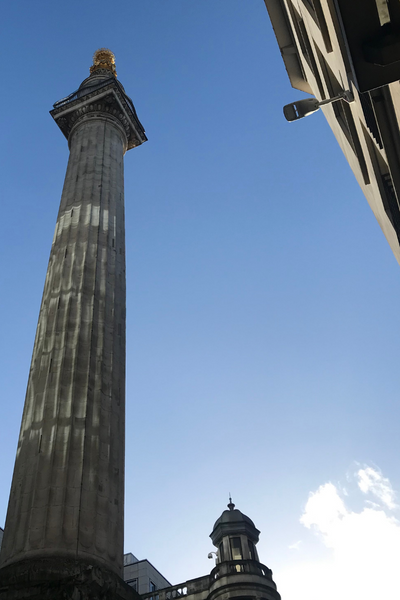The Great Fire of London Monument: A Testament to London’s Resilience
London is a city that cherishes its past, and this is evident in the countless historical landmarks scattered across its vibrant landscape. Among them, the Monument to the Great Fire of London, located on Fish Street Hill, stands out not only for its stature but also for its historical significance. This article invites you on a journey to explore this towering stone testament to one of the city’s defining moments.
Rising from the Ashes: The Story of The Great Fire
In 1666, the Great Fire of London ravaged the city, leaving four-fifths of it in ruins. The fire’s devastating path stretched from the iconic Tower in the East to Fleet Street and Fetter Lane in the West. It consumed approximately 13,200 houses, 84 churches, and 44 company halls, effectively reshaping the city’s map. Yet, in the ashes of devastation, the resilient spirit of Londoners began to stir, leading to a rebuilding effort as monumental as the disaster itself.
The Monument: A Memorial to Resilience

Erected on Fish Street Hill, the Monument to the Great Fire of London is more than a commemoration of the disaster. It is also a tribute to the determination and ingenuity of those who rebuilt the city. Standing at a majestic height, this monument is the tallest isolated stone column in the world, reflecting the monumental task of rebuilding London.
Building such an
imposing monument was no small feat. It took six years to construct, from 1671 to 1677, due to the difficulty of sourcing a sufficient quantity of Portland stone. The stone had to meet specific dimensions to suit the ambitious design of the Monument, causing the King to issue a proclamation in 1669. This proclamation forbade the transport of stone from the Isle of Portland without the explicit permission of the Monument’s architect, Sir Christopher Wren.
Located just North of London Bridge, the Monument is now one of London’s most recognized landmarks. A tube station carries its name, and it draws a considerable number of visitors, often seen lining up to ascend to its top for a panoramic view of the city. Despite this, the Monument remains somewhat underappreciated, with many visitors unaware of its rich and intriguing history.
Uncovering the Secrets of the Monument
There is so much more to the Monument than meets the eye. Its 311-step spiral staircase leads visitors to a viewing platform offering breathtaking views of the city. However, the Monument’s true fascination lies in its historical context. From the design challenges faced by Wren to the tales of resilience, it symbolises, the Monument’s story adds another layer of depth to its towering stature.
To learn more about the Monument to the Great Fire of London, delve into its past, and uncover the tales that it holds, check out our London History Podcast. It’s time to explore London’s rich history beyond the guidebooks and come face-to-face with the resilience and determination encapsulated in this monumental stone column.




